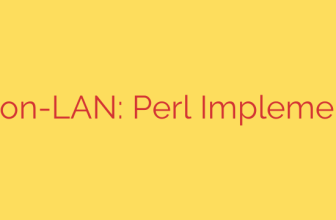
Unlock Your Home Network: A Guide to Dynamic DNS and Automated DDNS Clients
For anyone looking to host a personal website, run a game server, or remotely access files on their home network, one common obstacle stands in the way: a dynamic IP address. Most residential internet service providers assign IP addresses that change periodically. This makes it nearly impossible to reliably connect to your home services from the outside world.
Fortunately, there’s a powerful and straightforward solution: Dynamic DNS (DDNS). By using a DDNS service in combination with a DDNS client, you can create a stable, memorable address for your ever-changing home network.
What is Dynamic DNS (DDNS)?
Think of a standard DNS (Domain Name System) as the internet’s phone book. It translates human-friendly domain names (like example.com) into computer-friendly IP addresses. Dynamic DNS does the same thing, but it’s specifically designed for IP addresses that aren’t static.
A DDNS service links your chosen domain name to your home network’s current IP address. When your IP address changes, the DDNS service needs to be updated with the new one. Doing this manually is impractical, which is where a DDNS client comes in.
The Critical Role of an Automated DDNS Client
A DDNS client is a small, lightweight piece of software that runs on a computer or device within your home network. Its sole purpose is to automatically monitor your public IP address for any changes.
Here’s how it works:
- The client periodically checks your network’s public IP address.
- It compares the current IP address to the one last recorded by your DDNS provider.
- If a change is detected, the client securely communicates with your DDNS provider’s API to instantly update the DNS record with the new IP address.
This “set it and forget it” process ensures that your domain name always points to your home network, providing uninterrupted access to your services.
Key Features of a Modern DDNS Client
When choosing or setting up a DDNS client, there are several essential features to look for to ensure reliability, security, and flexibility.
- Multi-Provider Support: A robust client should support a wide range of popular DNS and DDNS providers, such as Cloudflare, GoDaddy, DuckDNS, and others. This gives you the freedom to choose the service that best fits your needs.
- IPv4 and IPv6 Compatibility: As the internet continues to transition to the newer IPv6 protocol, it is crucial that your client can manage both. A modern DDNS client must be able to detect and update both IPv4 (A records) and IPv6 (AAAA records) to future-proof your setup.
- Secure Communication: The client must communicate with your provider’s API over an encrypted HTTPS/TLS connection. This prevents your credentials and IP information from being intercepted and compromised.
- Lightweight and Efficient: A DDNS client should be a background service (or daemon) that consumes minimal system resources. This makes it ideal for running on low-power devices like a Raspberry Pi, a NAS, or your primary home server without impacting performance.
- Simple Configuration: Setup should be straightforward, typically involving a single, human-readable configuration file where you can specify your provider, credentials, and the domains you wish to update.
Practical Use Cases for a DDNS Setup
Once you have a reliable DDNS system in place, you unlock a wide range of powerful capabilities for your home network.
- Hosting a Personal Website: Run a blog, portfolio, or web application directly from a server at home.
- Running a Game Server: Host a private server for games like Minecraft or Valheim so your friends can connect easily using a simple domain name.
- Remote File Access: Securely access files stored on your Network Attached Storage (NAS) or home computer from anywhere in the world.
- Managing Smart Home Hubs: Remotely access and control your local smart home dashboard, such as Home Assistant.
- Remote Desktop Access: Connect to your home computer to work or provide technical support to family members without relying on third-party services.
Security Best Practices for Your DDNS Setup
Opening your home network to the internet requires careful security considerations. DDNS itself is secure, but it enables connections to services you host.
- Use a Strong Firewall: This is your first line of defense. Only open the specific network ports required for your services (a practice known as port forwarding). Keep all other ports closed.
- Keep All Software Updated: Regularly update the operating system on your server, your router’s firmware, and the DDNS client itself to protect against known vulnerabilities.
- Secure Your Services: Ensure any service you expose to the internet (like a website or file server) uses strong passwords, two-factor authentication, and encryption (SSL/TLS certificates).
- Consider a VPN for Access: For the highest level of security, set up a VPN server on your home network. By connecting to your VPN, you can securely access all your internal network devices without exposing multiple services directly to the public internet.
By implementing a DDNS client, you can transform your dynamic home internet connection into a powerful and consistently accessible hub for your projects, data, and digital life.
Source: https://www.linuxlinks.com/dness-dynamic-dns-client/








